How did the 28 largest cities, towns, and census designated places in Southern Arizona perform in measures such as income, population growth, and college attainment? This article will explore the key trends for these measures between the years 2000 and 2016. Hereafter, when discussing multiple cities, towns, or census designated places (CDP) the general term places will be used. Don’t forget to check out the Southern Arizona Annual Snapshot and the special feature on Income and Earnings for additional information on these Southern Arizona places.
How are we doing?
Between 2000 and 2016, 16 of the 28 Southern Arizona places posted population growth rates that met or surpassed the U.S. rate of 13.2% (figure 1). The city of Maricopa, located in Pinal County (south of the Phoenix city center), posted the fastest increase in population, with a growth rate of 4,272.4%. Other places in Southern Arizona with rapid increases in population include the city of Sahuarita at 756.9% and the town of Marana at 196.7%. Notable decreases in population occurred in the city of Bisbee, Morenci CDP, and cities of Willcox and Nogales.
Figure 1: Population Growth Rate (2000-2016)
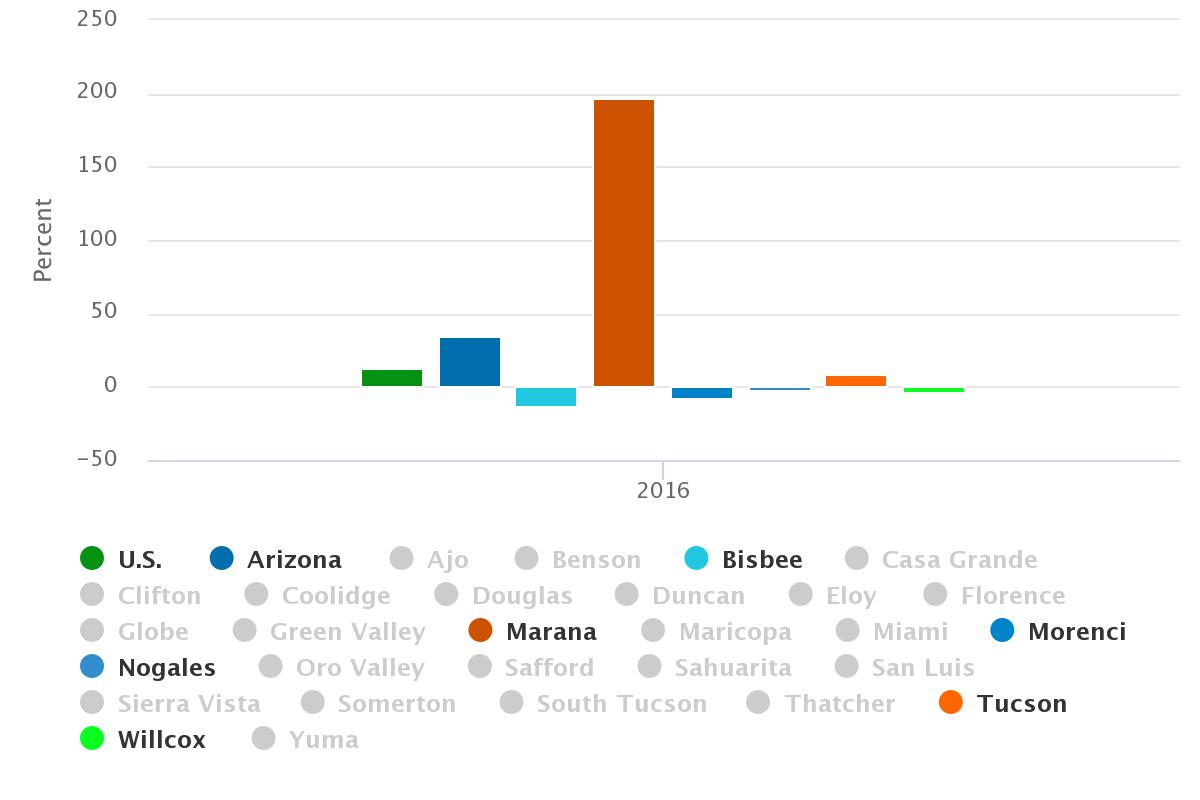
Key metrics of local economic performance are population and income growth. Let’s explore the trend for one measure of income: median household income. This indicator is an important gauge of the economic well-being of a region. It provides information about the financial resources available to households and is closely linked to employment levels, educational attainment, and regional economic opportunities.
In 2016, the median household income for the U.S. was $55,322, a 31.7% increase from 2000. In Southern Arizona, 12 of the 28 places explored posted a growth rate that surpassed the nation. The city of Maricopa, which had the fastest population growth between 2000 and 2016, also posted the fastest increase in median household income, rising from $30,625 to $68,888 or 124.9%. The city of Maricopa has seen rapid growth over the past decade in part due to its proximity to employment opportunities located in the Phoenix and Casa Grande regions, as well as new affordable housing options. The city of Benson reported the slowest growth in median household income during this period with an increase of only 6.1%. Figure 2 highlights the growth in median household income for the 28 Southern Arizona places.
Figure 2: Median Household Income
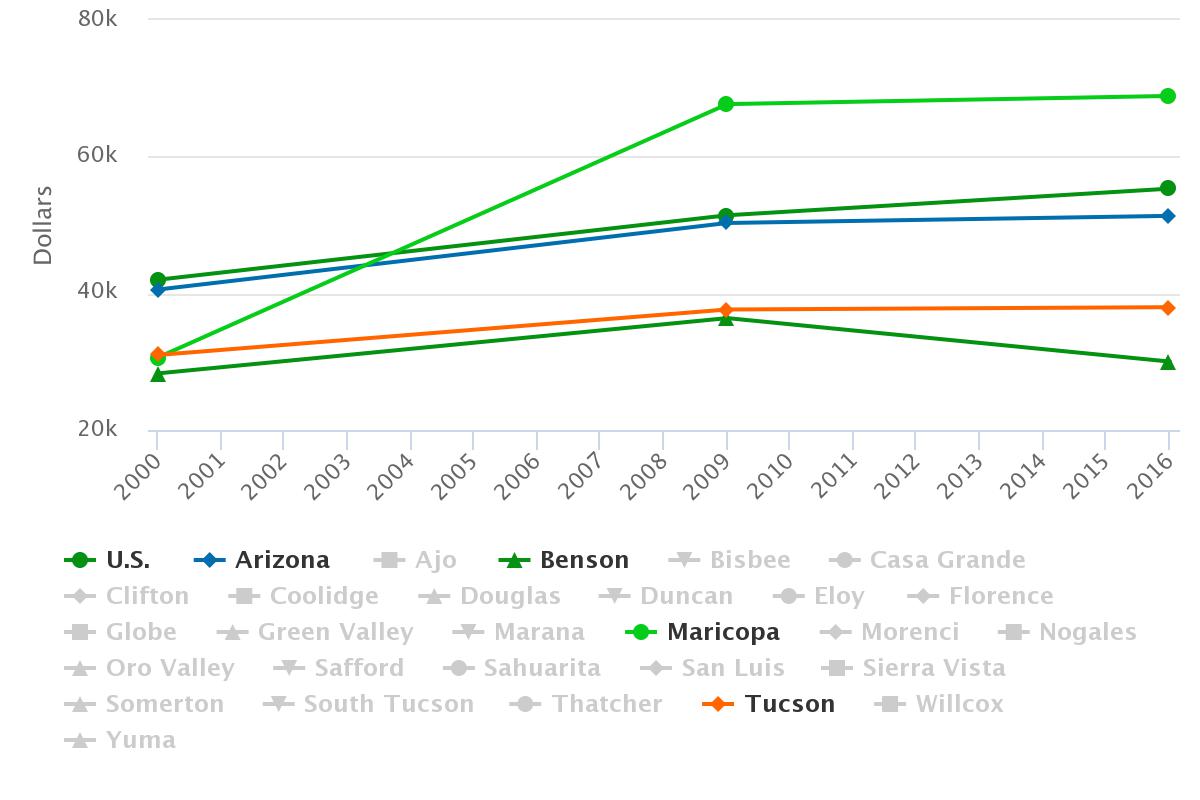
Closely linked to long-run income is the level of educational attainment for a region’s residents. Educational attainment is also a critical driver of job and population growth. Regions with a high concentration of highly educated residents tend to perform better across many socioeconomic indicators, including poverty, crime rates, and unemployment.
Nationally, the college attainment rate, defined as the share of residents age 25 and older with a Bachelor’s degree or more, increased by 5.9 percentage points from 2000 to 2016. Arizona’s rate rose slower, up by 4.5 percentage points. The city of Maricopa far outpaced the other Southern Arizona places, with an increase of 23.6 percentage points. Several places in Southern Arizona posted a decrease in the four-year college attainment rate during this period including the cities of Casa Grande, Douglas, Safford, South Tucson and the Morenci CDP (see Figure 3).
Figure 3: Population 25+ with a Bachelor's Degree or Higher
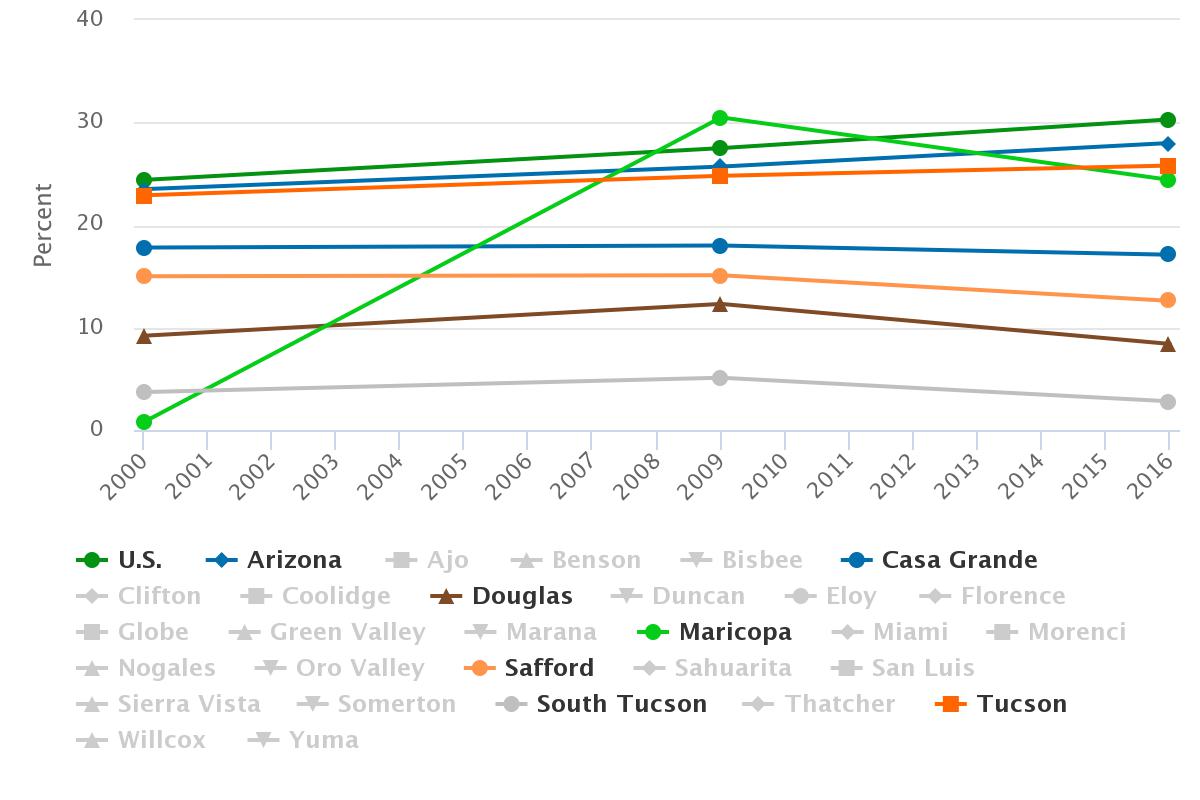
The poverty rate is closely tied to levels of income and educational attainment. Among the 28 Southern Arizona cities explored, the town of Marana had the lowest poverty rate, at 7.5%. Over the past 16 years, the town of Marana’s poverty rate has increased slightly by 1.3 percentage points. The city of Maricopa posted the most rapid drop in poverty, which decreased by 15.4 percentage points to a rate of 8.0% in 2016. That was more than double the reduction realized by any other community in Southern Arizona. Figure 4 explores the trend in the poverty rate for the 28 Southern Arizona places.
Figure 4: Poverty Rate
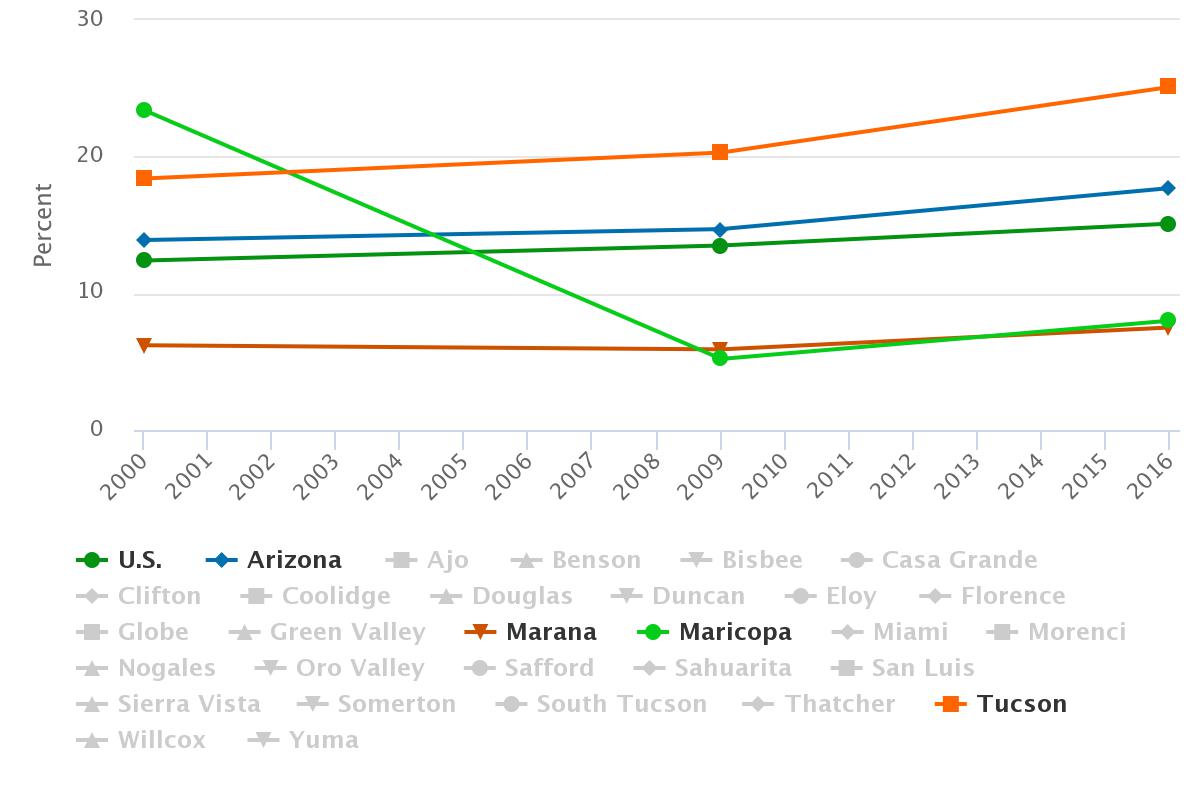
Enrollment in a quality early education program is a precursor to later success in school. The national rate of three-and-four year olds that attend an early education program remained nearly constant, at 47.5%, during the past 16 years. The state of Arizona’s rate increased slightly, by 2.9 percentage points, to 37.0%. Among the places explored, the town of Oro Valley posted the fastest decline in the early education attendance during the past 16 years, while the city of Yuma experienced the most rapid increase. Figure 5 highlights places in Southern Arizona where data is available for the percent of three-and-four year olds attending an early education program, please note that not all 28 places are included.
Figure 5: Percent of Three-and-Four Year Olds Enrolled in an Early Education Program
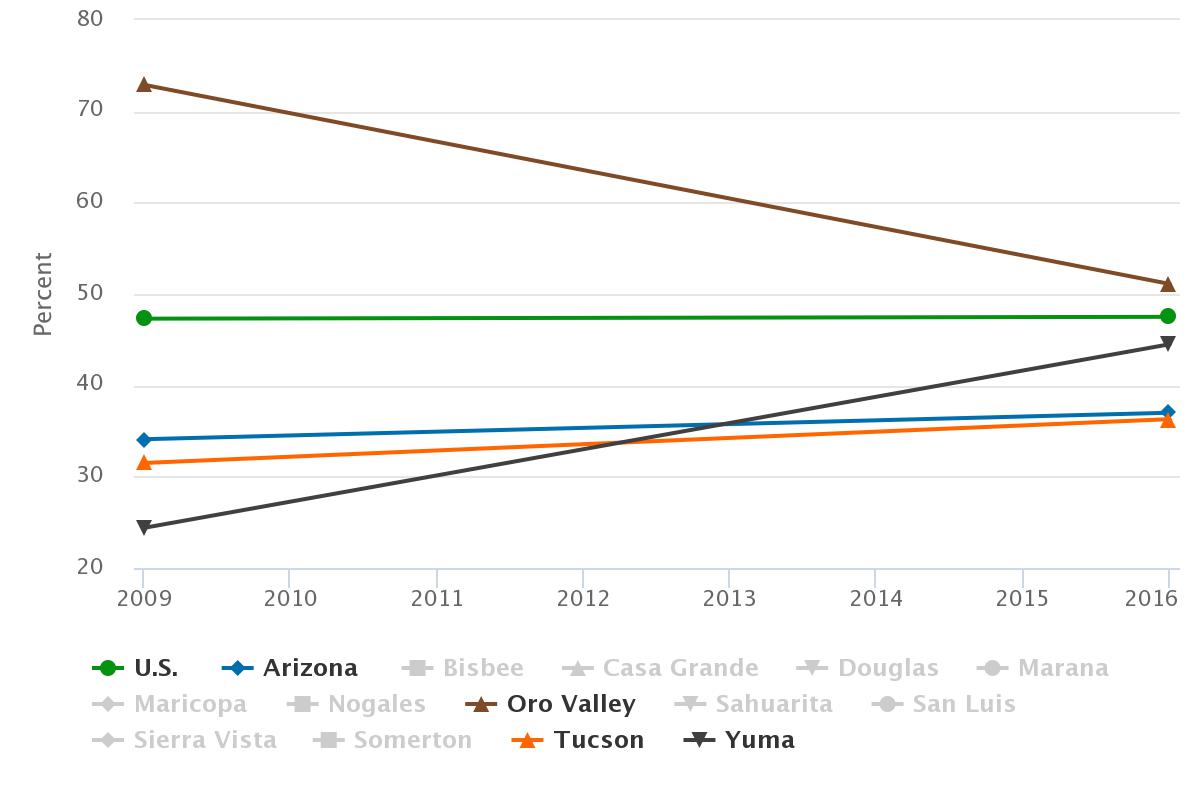
Do not forget to check back often for in-depth feature articles on the 28 most populous places in Southern Arizona. All special feature published to date on the Southern Arizona places can be found in the Library section of the MAP.












